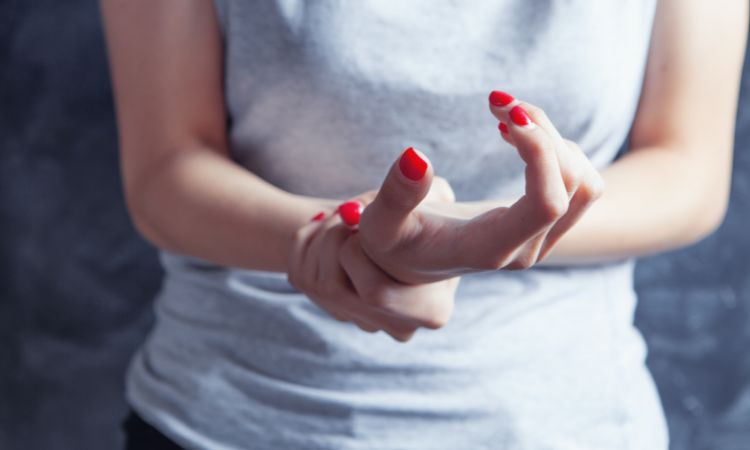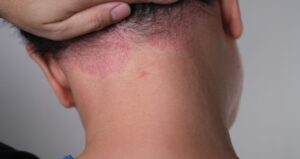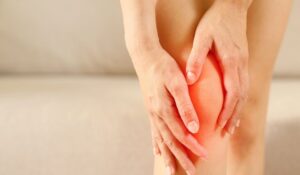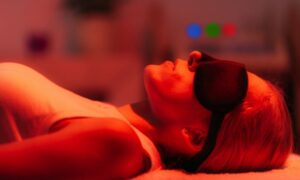Neuropathy, often linked to diabetes, nerve injuries, or chronic conditions, can leave people dealing with persistent numbness, tingling, and pain. Traditional treatments like medications, physical therapy, and lifestyle changes help, but many people are now asking: Is vibration therapy good for neuropathy?
The answer is promising. In fact, vibration therapy is being explored as a safe, non-invasive method to improve circulation, reduce discomfort, support nerve health, and help with age-related muscle loss, or sarcopenia. So, let’s break down what it is, how it works, and whether vibration therapy for neuropathy could be the right step for you.
What Is Vibration Therapy?
 Vibration therapy is a treatment that uses carefully controlled vibrations, often delivered through a vibration plate or a whole-body motion device, to stimulate muscles, nerves, and blood vessels. This stimulation helps improve circulation, support muscle function, and activate the body’s natural healing responses.
Vibration therapy is a treatment that uses carefully controlled vibrations, often delivered through a vibration plate or a whole-body motion device, to stimulate muscles, nerves, and blood vessels. This stimulation helps improve circulation, support muscle function, and activate the body’s natural healing responses.
There are two main types:
- Whole-body vibration therapy – You stand, sit, or lie on a vibration platform while it transmits gentle vibrations throughout your body.
- Localized vibration therapy – A smaller device delivers vibrations directly to specific areas, like your feet or hands.
The therapy was originally designed for muscle strengthening and rehabilitation, but researchers soon noticed benefits for people with circulation issues and nerve-related conditions, including neuropathy. For example, a study published in Pain Medicine found that whole-body vibration significantly reduced neuropathic pain in patients with diabetic peripheral neuropathy.
Related Article: Whole Body PBM Therapy vs Localized Therapy
How Vibration Therapy Helps Neuropathy
Peripheral neuropathy happens when the nerves outside the brain and spinal cord become damaged. This often leads to weakness, numbness, and pain, especially in the hands and feet. Vibration therapy has shown promising results in easing these symptoms and supporting nerve health in a few key ways:
1. Improves Blood Flow
Circulation problems are common in people with neuropathy, and poor blood flow makes it harder for nerves to repair themselves. Vibration therapy stimulates the tiny blood vessels in the affected areas, encouraging more oxygen and nutrients to reach damaged nerves. Over time, this improved circulation can support healing and reduce some of the discomfort caused by poor nerve health.
2. Reduces Pain and Tingling
Many people with neuropathy experience burning, tingling, or sharp pains that interfere with daily life. Research suggests that vibration therapy can influence the way sensory nerves send signals to the brain, essentially helping to “distract” the nervous system from sending constant pain messages. For some individuals, this leads to noticeable relief and a greater sense of comfort.
3. Enhances Nerve Function
Regular vibration therapy sessions provide gentle, repeated stimulation that can activate dormant or sluggish nerves. This stimulation may improve how well nerves respond to signals and even slow the progression of nerve damage. While it is not a cure, it can encourage healthier nerve activity and support long-term management.
4. Supports Muscle Strength
Neuropathy often weakens muscles because the nerves that control them are not functioning properly. Vibration plates trigger reflexive muscle contractions, which means the muscles work without the need for heavy exercise. Over time, this can help preserve muscle tone, improve balance, and make everyday movements easier.
What Does the Research Say?
Scientific evidence around vibration therapy for neuropathy is growing.
- A 2019 study in the Journal of Diabetes Research found that vibration therapy improved nerve conduction and reduced pain in patients with diabetic peripheral neuropathy.
- Research on whole-body vibration also shows positive effects on balance, gait, and lower limb function, all areas commonly affected by neuropathy. For instance, a 2024 study in Diabetes Care demonstrated that vibrating insoles significantly improved gait speed and dynamic balance during both level walking and stair descent in individuals with DPN.
- Patients also report a sense of relaxation and reduced discomfort after consistent sessions. While more large-scale studies are needed, these results suggest that vibration plate therapy for neuropathy may be a useful complementary approach alongside conventional treatments.
While more large-scale studies are needed, these results suggest that vibration plate therapy for neuropathy is a useful complementary approach alongside conventional treatments.
Vibration Plate Therapy for Neuropathy: How It Works in Practice
Using a vibration plate is surprisingly simple. You can stand, sit, or place your feet directly on the platform. As the machine vibrates, your muscles contract and relax rapidly, stimulating circulation and nerve activity.
For people with neuropathy, it can:
- Relieve stiffness and pain after long periods of inactivity
- Help reduce foot numbness by increasing blood flow
- Support gentle, low-impact exercise
Most sessions last 10–20 minutes and can be done several times a week. Unlike high-intensity workouts, vibration therapy is low-strain, making it accessible even for those with limited mobility.
Is Vibration Therapy Good for Neuropathy?
Vibration therapy has gained attention as a supportive option for people living with neuropathy. While it is not a cure, many find that it helps ease symptoms and makes daily life a little easier. By encouraging better circulation, reducing pain signals, and keeping muscles active, vibration therapy can play a valuable role in managing this condition.
Some people notice improvements in comfort and mobility after regular sessions, while others may only experience subtle relief. The effectiveness often depends on how advanced the neuropathy is, how consistently the therapy is used, and whether it is combined with other treatments or lifestyle changes.
That said, it is important to approach vibration therapy with care. People with severe neuropathy, poor balance, or other health concerns should check with a healthcare professional before starting, since strong vibrations may cause dizziness or strain if not monitored properly.
Introducing a Modern Solution: The Whole Body Wave Motion Exercise Device
For anyone considering vibration therapy, choosing equipment that feels comfortable and supportive makes all the difference. One option worth exploring is the Whole Body Wave Motion Exercise Device, available through Hue Light.
This device is built to create gentle, side-to-side wave motions that mimic the natural rhythm of walking. Compared to standard vibration plates, which can sometimes feel harsh or overwhelming, the wave motion device offers a softer and more controlled experience. That balance makes it especially well-suited for people managing neuropathy symptoms, as it provides stimulation without adding unnecessary strain.
Key Benefits:
- Boosts circulation by encouraging better blood and oxygen flow to the nerves and muscles.
- Gently stimulates nerves to help support healthier function without overwhelming the body.
- Eases stiffness and muscle fatigue, moving feel more comfortable.
- Simple to use at home — just place your feet on the device, relax, and let the gentle wave motion do the rest.
For individuals looking to explore vibration therapy for peripheral neuropathy in a safe, convenient way, this device can be a practical solution.
How to Safely Use Vibration Therapy for Neuropathy
If you’re thinking about trying vibration therapy at home, following a few simple guidelines can help you get the most benefit while staying safe:
- Start slow – Begin with short sessions of around 5 to 10 minutes. This allows your body to adjust to the vibrations and helps prevent discomfort or overexertion. Gradually increase the duration as you become more comfortable.
- Consult your doctor – Before starting, especially if you have diabetes, heart conditions, or advanced neuropathy, check with your healthcare provider. They can help ensure vibration therapy is safe and appropriate for your specific condition.
- Stay consistent – Regular, moderate sessions tend to be more effective than occasional use. Consistency helps reinforce nerve stimulation, improve circulation, and maintain muscle strength over time.
- Combine with other care – Vibration therapy works best as part of a holistic approach. Pair it with a balanced diet, gentle exercise, proper foot care, and any medical treatments recommended by your doctor to support overall nerve health
Other Natural Ways to Support Neuropathy Relief
Vibration therapy can be a powerful tool, but it works best when combined with other lifestyle strategies that support nerve health and overall well-being:
- Stay active – Regular exercise helps improve circulation, supports nerve function, and maintains muscle strength. Low-impact activities like walking, swimming, or gentle stretching can be especially beneficial.
- Eat nutrient-rich foods – A balanced diet that includes B vitamins, antioxidants, and omega-3 fatty acids can help protect nerves and reduce inflammation. Foods like leafy greens, fatty fish, nuts, and whole grains are excellent choices.
- Manage blood sugar levels – For those with diabetes, keeping blood glucose within a healthy range is crucial, as high levels can accelerate nerve damage and worsen neuropathy symptoms.
- Explore complementary therapies – Gentle massage, red light therapy, and other non-invasive treatments can help ease discomfort, improve circulation, and enhance overall relaxation.
By combining these approaches with vibration therapy, you can create a more holistic plan to support nerve health and potentially reduce the impact of neuropathy on daily life.
Final Thoughts
Vibration therapy offers a promising and supportive approach for anyone managing neuropathy. Research and practical experience show that it can significantly support nerve health, helping to improve circulation, reduce pain and tingling, enhance nerve responsiveness, and strengthen muscles. These benefits make everyday movement easier, more comfortable, and more enjoyable.
When combined with healthy habits such as gentle exercise, a nutrient-rich diet, proper blood sugar management, and complementary therapies like massage or red light therapy, vibration therapy becomes an even more powerful tool in maintaining nerve and muscle health.
For those exploring this therapy at home, the Whole Body Wave Motion Exercise Device provides a gentle, controlled, and convenient way to experience these benefits. Its side-to-side wave motions mimic natural walking patterns, offering effective stimulation while remaining easy on the body. By simply using the device at home, you can support circulation, nerve activity, and muscle strength without the strain of traditional exercise.
By incorporating vibration therapy with a holistic approach to neuropathy care, individuals can take proactive steps toward reducing discomfort, improving mobility, and enhancing overall quality of life—all while enjoying a safe, low-impact, and user-friendly solution.













